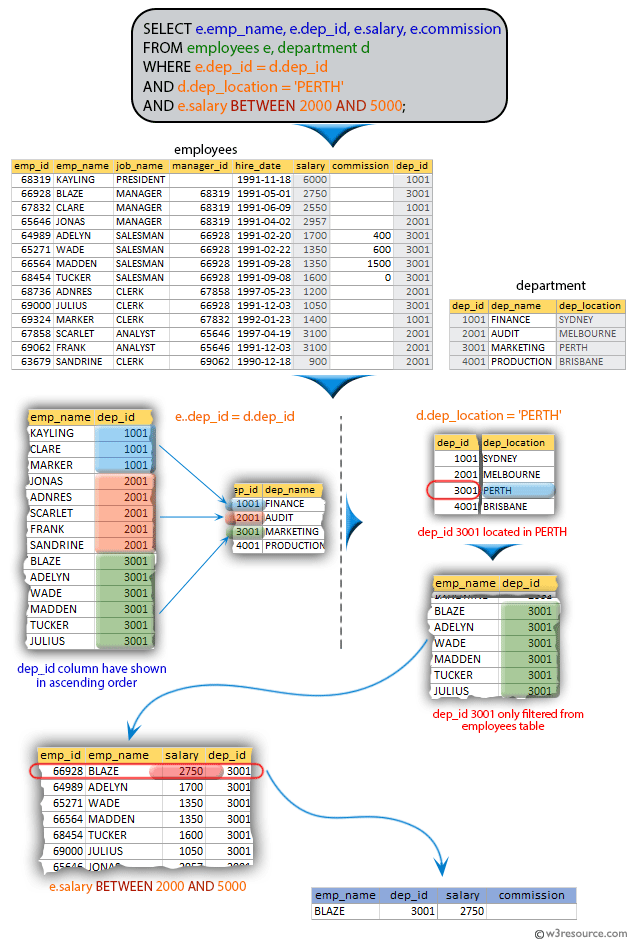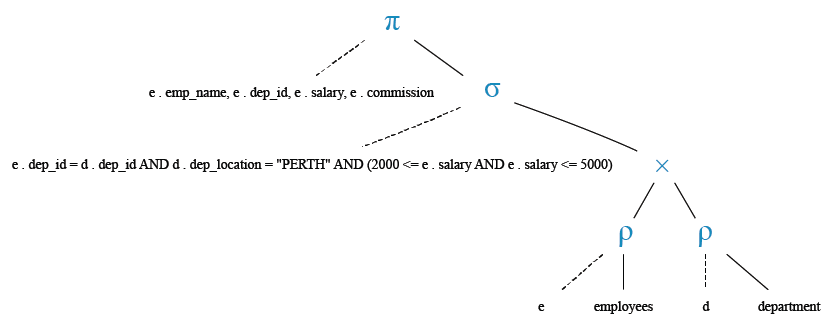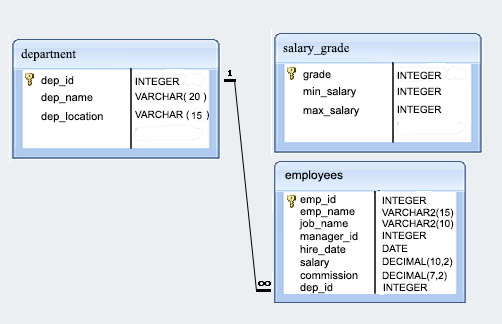SQL Exercise: Employees whose salary is in a range and location PERTH
[An editor is available at the bottom of the page to write and execute the scripts.]
55. From the following table, write a SQL query to find those employees whose salary is between 2000 and 5000 (Begin and end values are included.) and location is PERTH. Return employee name, department ID, salary, and commission.
Sample table: employees
Sample table: department
Pictorial Presentation:
Sample Solution:
SELECT e.emp_name,
e.dep_id,
e.salary,
e.commission
FROM employees e,
department d
WHERE e.dep_id = d.dep_id
AND d.dep_location = 'PERTH'
AND e.salary BETWEEN 2000 AND 5000;
Sample Output:
emp_name | dep_id | salary | commission ----------+--------+---------+------------ BLAZE | 3001 | 2750.00 | (1 row)
Explanation:
This is a SQL query that selects the employee name, department ID, salary, and commission for all employees from the employees and department tables.
The query is using an inner join in the WHERE clause to combine data from the employees and department tables based on their common column dep_id. It then includes the employees who work in the department located in Perth and whose salary is between 2000 and 5000.
Relational Algebra Expression:
Relational Algebra Tree:
Go to:
PREV : Employees whose salary is greater than their managers.
NEXT : Employees joined before a date but not graded 4.
Practice Online
Sample Database: employees
Have another way to solve this solution? Contribute your code (and comments) through Disqus.
What is the difficulty level of this exercise?
Test your Programming skills with w3resource's quiz.




